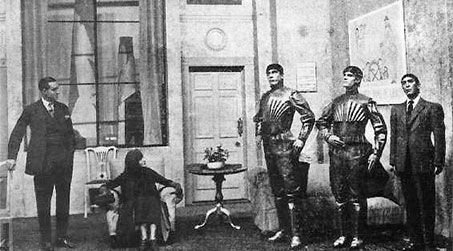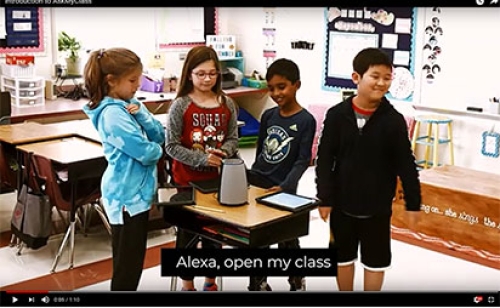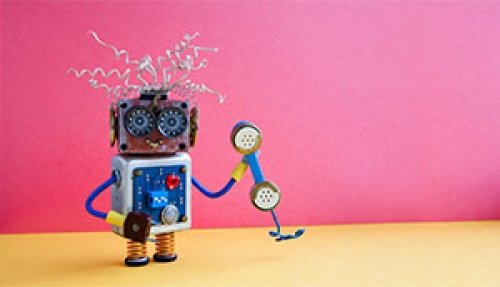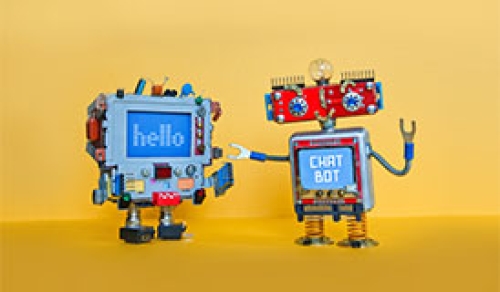-
View article
 #Financial publications
#Financial publicationsPhilippe Brassac discusses the results for the full year and fourth quarter of 2023 as well as the universal banking model
2024/02/08
- #Artificial Intelligence
- 2019/06/21
- 0
-
6
Are you ready to learn with a robot?
Among the technologies that are revolutionising how we work, learn and stay informed, artificial intelligence and robots are perhaps the ones that herald the greatest upheavals over the coming decade. A key part of IFCAM’s mission is to anticipate such developments so as to adapt its practices and help learners navigate these changes. The Group’s university therefore organised an exhibition at which attendees explored the advantages and limitations of robots in a training environment.
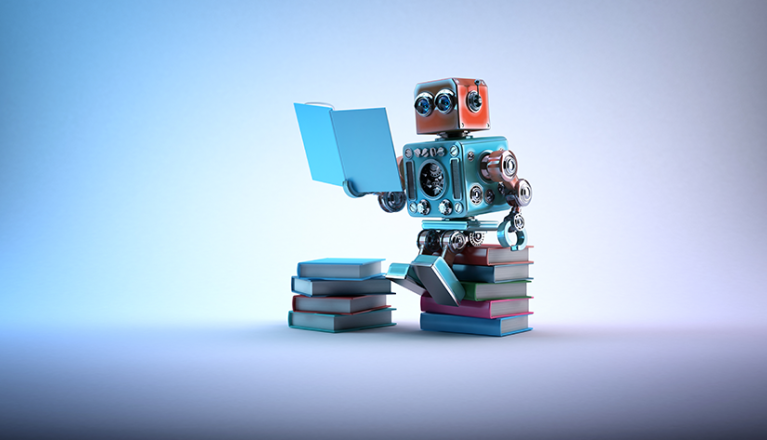
Robots and artificial intelligence
What is a robot?
Created from the Czech word “robota”, meaning “forced labour”, the word “robot” first appeared in 1920 in Karel ?apek’s science fiction play : R. U. R. (Rossumovi Univerzální Roboti ou "Rossum's Universal Robots").
Since then, the Western cultural imagination has been fed a rich diet of catastrophic expectations on the subject, fuelled by sci-fi cinema and literature.
Video : “Robots in literary and cinematographic science fiction”, by Natacha Vas-Deyres - Bordeaux Montaigne University
Relevant to the issue of learning are not only robots but also artificial intelligence (AI).
What is AI?
One of its creators, Marvin Lee Minsky, provides the following definition of artificial intelligence:
He uses the words “intelligence”, with the aim of closely evoking human behaviour, and “artificial”, referring to the use of a robot or machine.
What role is there for robots in training?
Plenty of technologies linked to automation and artificial intelligence can help us learn, with very promising new applications.
For example, start-up « Ask my class » has created the first voice assistant for teachers.
Like any new technology, robots and AI are merely speeding up existing trends that are already transforming Learning.
Two particular examples: adaptive learning or, more generally, the idea of greater personalisation of learning pathways and methods; and the decentralisation of learning, which is increasingly taking place anywhere but in training rooms.
Video : “What role can trainers play in a world of robots?”,by Olivier Charbonnier
Can a robot replace a human trainer?
To pass the Turing test, proposed by Alan Turing in 1950, a machine must converse with a human being without the latter being able to tell whether his or her conversation partner is a machine or a human. While this test needs optimising, it raises awareness of the potential offered by IA.
Out of 140 tests carried out at the IFCAM exhibition, titled “How do you fancy learning with a robot?”, participants were unable to distinguish an AI from a human 47 times (i.e. in 34% of cases).
Would you have got it right?
Learning with a robot: “Yes, but…”
Of the hundred or so people who attended workshops, 95% answered “yes”, for various reasons and subject to certain conditions.
They were won over by the fun, attractive nature of the technology, which makes learning a pleasure. Robots allow for greater personalisation, and thus for more flexible learning. Lastly, robots’ knowledge seems more reliable and comprehensive thanks to their information storage capacity, which far exceeds that of humans.
However, robot learning is currently still limited. Robots are unable to master certain human qualities and skills, such as kindness, the ability to adapt based on feedback and the ability to motivate, lead or unite a group.
Robots follow a single-skill learning process. They are unpredictable in complex situations, can be influenced by the people who write their code and can break down or be hacked.
How IFCAM uses data and AI to optimise training?
IFCAM uses robots and AI for training purposes whenever doing so creates genuine educational added value.
Adaptive learning pilots are aimed at: facilitating and consolidating employee learning by drawing on training data and AI; optimising success rates and training times in MOOCs*; and optimising the time taken to go from a quiz to training recommendations.
Tried out at IFCAM since January 2019, adaptive learning uses past training data and AI to analyse learners’ profiles and personalise their training pathways.
Meanwhile, chatbot CArl helps advisors answer day-to-day questions about banking-related matters. Its answers are educational, instant and context-relevant. It has been installed on branch employees’ workstations in six Regional Banks: Savoie, Sud Rhône Alpes, Finistère, Normandy, Provence Côte d’Azur and Centre-Loire.
The chatbot, used before and after a training session, helps embed knowledge.
Other projects are also underway. Combining the views of exhibition attendees with technological possibilities, IFCAM could use several types of robots:
- Training partners that help recite, practice or simulate situations
- Robots that facilitate on-the-job learning: available 24 hours a day, with access to a vast store of knowledge
- Human-assisted robot trainers for comprehensive training on specific topics, either face to face or remotely
En conclusion, avec les intelligences artificielles et les robots, c’est la définition de l’apprentissage lui-même qui va évoluer. Aujourd’hui, nous avons directement accès à de nombreuses informations grâce à nos smartphones. Nous sommes moins dans l’apprentissage de certaines données, que nous avons en revanche besoin de savoir utiliser en contexte. L’intelligence des situations et la sollicitation des compétences adéquates, vont ainsi devenir essentielles dans l’apprentissage.
*Massive Open Online Course: These are online-only courses for which anyone can register free of charge.

